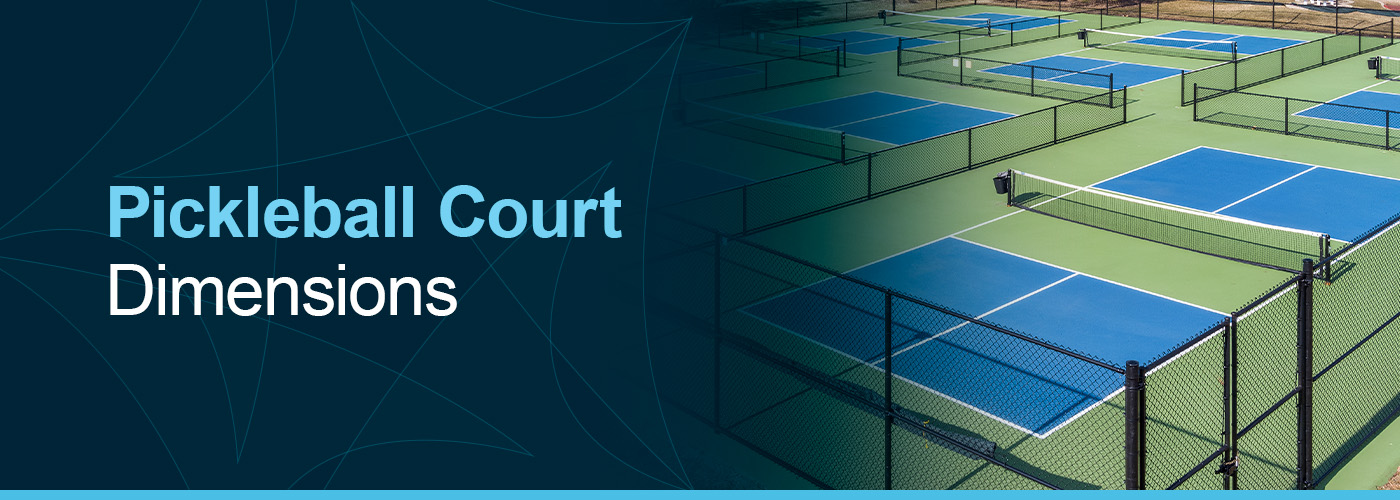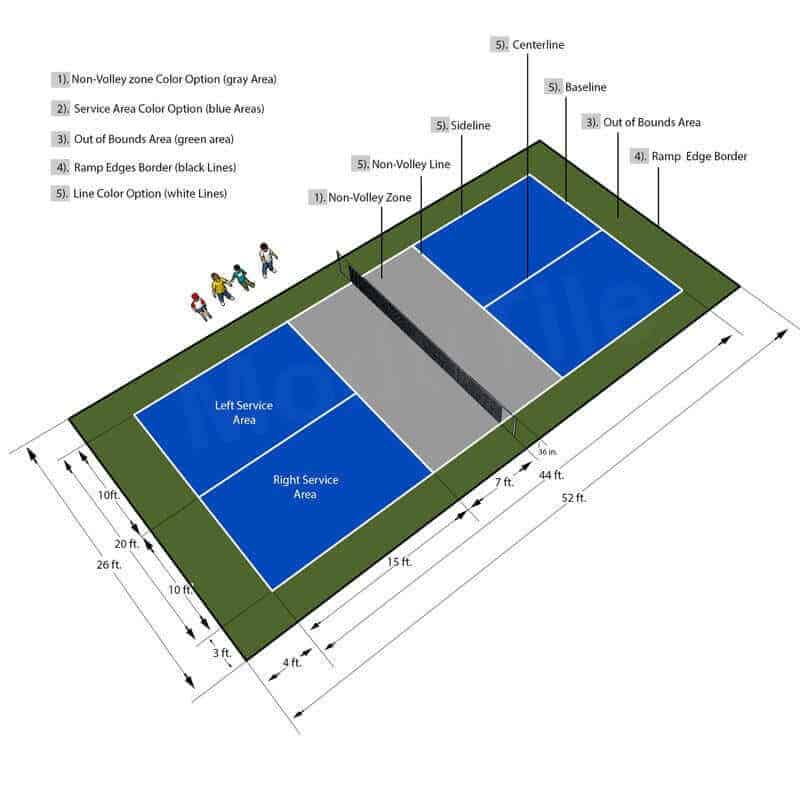Navigating Rules for Pickleball Court Building And Construction in Your Area
Building a pickleball court in your area requires a nuanced understanding of numerous local regulations, consisting of zoning laws, structure licenses, and safety requirements. Each municipality enforces particular guidelines that can substantially influence the expediency of your task. Involving with neighborhood authorities and the area is critical for ensuring compliance and fostering assistance. Browsing this regulatory landscape can be complex and taxing. What are the key actions you should think about to stay clear of potential mistakes and guarantee a smooth construction procedure?
Recognizing Neighborhood Zoning Legislations
When thinking about the building and construction of a pickleball court, comprehending neighborhood zoning legislations is essential to making certain compliance and preventing possible lawful issues. Zoning regulations determine just how land can be used and typically consist of specs pertaining to recreational facilities. These legislations can differ considerably by community, influencing variables such as court positioning, sound, lights, and size degrees.
Prior to launching building and construction, it is necessary to speak with the local zoning board or planning department to ascertain the specific regulations that relate to your home. Specific zones may limit entertainment tasks, while others may require specific authorizations or adherence to certain standards. It is likewise important to consider troubles, which establish exactly how far frameworks have to be from building lines or various other buildings.
Additionally, exclusive advancements, such as property owner organizations (HOAs), might impose their very own guidelines regarding the building and construction and use of pickleball courts. Understanding these regulations can protect against expensive modifications or lawsuits down the line. Engaging with neighborhood stakeholders and community participants can supply valuable understandings and foster support for your task, guaranteeing that it aligns with the neighborhood's needs and assumptions.
Obtaining Necessary Building Allows
Exactly how does one browse the complexities of getting required structure permits for a pickleball court? The procedure starts with comprehending neighborhood laws and needs established forth by municipal authorities. Usually, you will require to send an in-depth website plan that details the proposed court dimensions, products, and format. This plan must abide by zoning laws and any type of details policies concerning entertainment centers.

As soon as permits are acquired, it is critical to follow any type of assessment routines and requirements throughout the building and construction phase. Preserving interaction with regional authorities will assist in a smoother authorization procedure and help prevent prospective troubles. By thoroughly preparing and comprehending the permitting landscape, you can efficiently browse the intricacies involved in constructing a pickleball court while staying certified with all regional laws.

Assessing Environmental Influence
A detailed assessment of ecological impact is necessary when planning the building and construction of a pickleball court. This examination aids determine possible effects on regional ecological communities, water resources, and neighborhood visual appeals. Trick factors to think about consist of website selection-- making sure that the court is not built on ecologically sensitive land, such as marshes or environments for endangered types
Dirt security and water drainage patterns should be examined to protect against erosion and water pooling, which might adversely influence bordering vegetation and wildlife. Furthermore, the option of products is important; deciding for sustainable and green alternatives lessens ecological damage.
The execution of effective stormwater management practices is another important element, as it assists alleviate overflow and sedimentation. Engaging with regional environmental agencies can offer important insights into policies and best practices specific to your look at this web-site area.
Last but not least, community input can be beneficial in understanding any local ecological problems and promoting support for the project. By conducting a comprehensive environmental influence analysis, stakeholders can make sure that pickleball court building aligns with lasting techniques and adds positively to the area's eco-friendly health and wellness.
Conforming With Security Criteria
Ensuring conformity with security standards is crucial for the effective building and procedure of a pickleball court. Following well-known security regulations decreases the danger of accidents and injuries, guaranteeing a secure setting for players.
Trick security criteria include correct court dimensions, surface area materials, and lights demands. The court has to satisfy the main dimensions of 20 feet large by 44 feet long for increases play, with ideal barrier zones to stop injuries from errant rounds. Pickleball court construction. The surface must be constructed from non-slip products to boost traction and lower the possibility of drops
Additionally, illumination has to suffice for night play, offering consistent illumination to prevent darkness that can prevent visibility. Regional building regulations may likewise determine details requirements for fence and internet height to guarantee gamer safety and security and avoid More hints unauthorized accessibility to the court location.
Normal evaluations and maintenance are necessary to copyright these requirements gradually. By prioritizing safety visit the website compliance, court owners not just shield gamers but also promote a favorable online reputation within the area. This commitment to safety can encourage higher involvement and pleasure of the sporting activity, inevitably adding to its development and sustainability.

Involving the Neighborhood in Preparation
Community participation in the drawing board of pickleball court building can dramatically enhance the project's general success. Involving neighborhood homeowners and stakeholders fosters a sense of ownership and encourages collective decision-making, which can result in broader assistance for the initiative.
To efficiently entail the area, coordinators need to start public meetings or workshops, supplying a system for locals to voice their point of views and choices pertaining to area, layout, and services. Studies and feedback forms can additionally be made use of to gather insights from a wider audience, making certain that varied viewpoints are taken into consideration.
Moreover, forming a neighborhood board of advisers can help with continuous conversations and address issues throughout the preparation procedure. This board can include representatives from numerous demographics, such as neighborhood schools, recreational companies, and area organizations, consequently amplifying community representation.
Reliable interaction is essential; updates about the task must be on a regular basis shared by means of newsletters, social media, or neighborhood bulletins. By focusing on neighborhood engagement, organizers can cultivate excitement, alleviate prospective resistance, and produce a pickleball facility that absolutely reverberates with regional worths and requirements. This collaborative technique not only enriches the task however also enhances community ties.
Conclusion
In verdict, navigating the complexities of pickleball court building requires a thorough understanding of local policies, including zoning legislations, structure authorizations, and safety standards. By adhering to these guidelines and promoting cooperation, effective execution of pickleball courts can be attained, advertising entertainment possibilities and community well-being.
Constructing a pickleball court in your area requires a nuanced understanding of various local policies, including zoning laws, building permits, and safety standards.When considering the construction of a pickleball court, understanding local zoning laws is crucial to ensuring compliance and staying clear of possible legal problems. By thoroughly preparing and understanding the allowing landscape, you can efficiently browse the complexities involved in creating a pickleball court while continuing to be certified with all regional regulations.
In verdict, browsing the complexities of pickleball court construction necessitates a thorough understanding of regional policies, including zoning regulations, building permits, and safety and security standards. By sticking to these guidelines and promoting partnership, successful implementation of pickleball courts can be achieved, advertising recreational possibilities and neighborhood well-being.
Comments on “Factors to Consider for High Quality Pickleball Court Construction and Design”